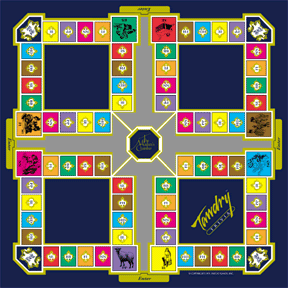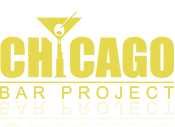For years, the Everleigh Club graced its location near Taco Burrito Palace #2 on Halsted, just north of the Halsted-Fullerton-Lincoln intersection. The “club” was really more of a “Blue-collar cigar club with a hint of undergraduate,” according to Chicago Centerstage. Patrons would often head to the Everleigh Club after a night of hitting the blues clubs up the street, like the Kingston Mines and B.L.U.E.S., during Lincoln Avenue pub crawls, or for a quiet pint during the week. Specials included a $5 microbrew sampler, free buffalo wings on Fridays and Coors Lite on Tuesdays. “A favorite spot of the Lincoln Park hordes, which means the charming decor is often lost amid the crush of people exchanging pick-up lines,” is how the Official Chicago Bar Guide described it in 1994.
The Everleigh Club was named after one of Chicago’s most notorious establishments. The original Everleigh Club was in fact a bordello run by sisters, Ada and Minna Everleigh. The Everleigh sisters, were born the decade after the Civil war (the 1870’s for you less-than-history buffs) near Louisville Kentucky. They were born with the surname “Lester,” but took the name “Everleigh” from their grandmother’s habit of signing her letters “Everly Yours.” Once both of their marriages dissolved, the sisters invested $35,000 of estate inheritance into a classy brothel in Omaha, Nebraska. After doubling their investment within two years, the savvy Everleigh sisters sold the brothel to move on to bigger and better things on the South Side of Chicago (in its pre-Leroy Brown days).
In 1900, the Everleigh sisters bought another brothel at 2131 S. Dearborn Street, in Chicago’s notorious red-light district known as “The Levee,” and named it the “Everleigh Club.” In addition to the Everleigh Club, the Levee boasted other houses of prostitution like, “The House of All Nations,” “The Little Green House,” “Bed Bug Row,” the “Bucket of Blood,” “Ed Weiss’ Capitol,” and “Freidberg’s Dance Hall.”
The club, ultimately housed in twin brownstone mansions, was even more opulent than the one in Omaha, with its mahogany and walnut paneling, tapestries, oriental rugs, statuary, gold-framed nude paintings, a library filled with expensively bound volumes, and a music parlor featuring a $15,000 gold-leaf piano. The first floor of this hedonistic den consisted of themed parlors catering to groups (yeah baby), including the Copper Room (walls covered in beaten copper), th Silver Parlor, Turkish Room, Rose Parlor, and the Japanese Throne Room (my personal favorite). Another parlor known as “The Gold Room,” featured gold-rimmed fishbowls and a miniature gold piano. Each room held a $650 gold cuspidor (spittoon) and a fountain that sprayed perfumes. For those seeking privacy, one could head upstairs into one of the private rooms. After working up an appetite, one could then head to the dining room, which was designed to feel like a private Pullman train car. The menu consisted of lavish fare, including: caviar, oysters, duck, capon, and lobster.
The clientele at the original Everleigh Club was somewhat different than its antecessor. There were industrialists, politicians, the local elite, and even the occasional European noble or royal like Prince Henry of Prussia. Visitors had to have letters of introduction to be admitted, and were those who could afford the exorbitant prices: $10 for admission, $12 for a bottle of wine, $50 for dinner, $25 for supper, and $50 for an evening with one of the ladies. To put this in perspective, beer usually cost a nickel in those days. The food was prepared by a a cordon bleu chef, and the girls were chosen for their beauty, intelligence, communication skills, and their mastery of the sexual arts. Gentlemen who left without spending at least $50 were advised not to return.
 Overall, the Everleigh Club was felt by many to rival anything found in Paris. However, as all good things must come to an end, so too did the Everleigh Club. For years, the Everleigh sisters counted on protection from corrupt aldermen John “Bathhouse” Coughlin and Michael “Hinky Dink” Kenna, resulting from hundreds of thousands of dollars in bribes. Then, a vice commission was appointed in 1910 by reformist mayor, Carter H. Harrison, Jr., and the Everleigh Club became the first target due to its enormous, and even international, infamy. In 1911, the Everleigh Club was shut down on direct orders from Harrison. The shrewd Everleigh sisters took the closing in stead, as they retired to New York City with over $1 million in cash, jewelry and stock. There, the Everleighs ran a poetry circle until the end of their days. This notoriety led to the naming of the Everleigh Club on North Halsted Street, and is even the inspiration for the boardgame, “Tawdry.”
Overall, the Everleigh Club was felt by many to rival anything found in Paris. However, as all good things must come to an end, so too did the Everleigh Club. For years, the Everleigh sisters counted on protection from corrupt aldermen John “Bathhouse” Coughlin and Michael “Hinky Dink” Kenna, resulting from hundreds of thousands of dollars in bribes. Then, a vice commission was appointed in 1910 by reformist mayor, Carter H. Harrison, Jr., and the Everleigh Club became the first target due to its enormous, and even international, infamy. In 1911, the Everleigh Club was shut down on direct orders from Harrison. The shrewd Everleigh sisters took the closing in stead, as they retired to New York City with over $1 million in cash, jewelry and stock. There, the Everleighs ran a poetry circle until the end of their days. This notoriety led to the naming of the Everleigh Club on North Halsted Street, and is even the inspiration for the boardgame, “Tawdry.”
“The E-Club was a favorite haunt for us in the days when Exit or Neo was too crammed or we just desired their excellent juke box. One story you didn’t mention in your article was that one of the previous renters of the space was an occult shop – I used to go there, too. You could buy male & female candles to burn and if memory serves, they actually had jars marked ‘Cemetery Dirt’ along with jars of who knows what. They were only open from dusk ’till dawn and if you got there before they opened there were rose petals strewn on the entryway. Surely others would recall this place…”
The modern-day Everleigh Club closed in the late 1990’s and prompted former owner Chris Schuba to join his brother Mike in the management and ownership of Schuba’s Tavern. While both Everleigh Clubs are now gone, the spirit continues at 2447 North Halsted, with the swanky “Jub Jub Club.” There you can enjoy cocktails in plush surroundings, while lambasting the evils of “Political Correctness,” and pining for the good ol’ days. Get it on!
